| Local artists reflect on war, sacrifice, and what is we are fighting for now Janet Chalker - Pat Dougherty - Patrick Ellis – Helen Hubler - Shelley Koopmann - Nancy Laurent June 4 - July 6, 2019 Goose Creek Studio - Bedford Virginia Opening Reception - June 14, 5 -8 PM - 2nd Fridays in Bedford Gallery Talk/Evening Prayer in the Time of War – June 23, 5 PM |
| Curator’s Statement an·amne·sis (a-ˌnam-ˈnē-səs): a recalling to mind We live in the shadow of a national memorial which focuses on a day that held tragic local consequences. This month black banners line the streets of downtown Bedford which proclaim “Bedford Remembers.” Intermingled are patriotic banners each with a photo and name of a Bedford man killed at Omaha Beach on June 6th, 1944. Posters line the windows of storefronts with slogans like “The greatest tragedy of D Day would be to forget it”. A new tribute center filled with memorabilia of the town’s sacrifice in World War II has opened in the old Green’s Drug Store where the first words of a local calamity arrived on the teletype machine. On the 75th anniversary of the D Day invasion, Bedford is ready to welcome visitors as it invites the country to look back and to remember. How we remember shapes our understanding of the past. How we remember also forms our present identity and informs the future we build together. Tyranny, white supremacy, extreme nationalism, genocide, and hate did not end with the allied victory in Europe. Certainly, all these matters are currently at the forefront of our national debate and much our social disunion. Likewise, the courage to sacrifice for democracy and liberty, to fight for the basic human rights of all people, and a patriotic passion for the heart and soul of this country did not end with the Bedford Boys. What we need, now more than ever, is a remembering of this local narrative which can shape our current and future life together. This is not only the job of a memorial or a museum. The weaving together of past and present is the work of creative and pastoral folks who help us find meaning in complex problems; those such as pastors, politicians, songwriters, poets and artists, or anyone assisting the community form both its identity and its values. In the academic disciplines of theology, liturgy and ritual studies, the term anamnesis is understood as much more than just remembering. Anamnesis is a communal action that involves recalling the narrative of an important past event in order to make present the same gifts and graces that gave that event transformative power over the community in the first place. This concept is found in all the world’s religions such as the miraculous replenishing of oil of the temple lamp brought to life every Hanukkah, the breaking of bread and sharing of a cup made present each week at Holy Communion, or Muhammed’s spiritual pilgrimages recreated during the Haj. This is remembering with a purpose and remembering that has a job to do. Anamnesis is a bringing a past event present to form meaning and give a community direction in this moment in time. Transformational past events that once so powerfully shape the lives of a community, whether religious or civic, are remembered because they continue to have the power to shape current struggles and give us strength and hope for the journey. Because the tragic local consequences of D-Day, along with the national memorial to the day, are ever-present in both our local landscape and our civic imagination, the subjects of war, sacrifice, and remembering are filled with possibilities for the local creative imagination. In conjunction with our community’s D Day observances, seven area artists present new works reflecting on these subjects. | Hope and Yearning The task of the prophetic imagination and ministry is to bring to public expression those very hopes and yearnings that have been denied so long and suppressed so deeply that we no longer know they are there. Hope, on the one hand, is an absurdity too embarrassing to speak about, for it flies in the face of all those claims we have been told are facts. Hope is the refusal to accept the reading of reality which is the majority opinion; and one does that only at great political and existential risk. Hope, on the other hand, is subversive, for it limits the grandiose pretentions of the present, daring to announce that the present to which we have all made commitments is now called into question. Creativity about hope cannot be explanatory and scientifically argumentative; rather, it must be lyrical in the sense that it touches the hopeless in all of us at many different points. More than that, however, creativity about hope must be primarily theological, which is to say that it must be in a language of covenant between and personal god and a community. It is finally about God and us, about God’s faithfulness that vetoes our faithlessness. Those who would be prophetic will need to embrace that absurd practice and that subversive activity … hope. Walter Brueggemann, The Prophetic Imagination |
| Pat Dougherty juxtaposes a series of small black and white portraits of the Bedford Boys with an image of a young African American counter protester at the “Unite the Right” rally in Charlottesville. Dougherty ties 1944 to 2017 with images unified under the same American flag and the same willingness and courage to stand up to tyranny and extreme nationalism. |
| Patrick Ellis has created a large “chess board” installation inspired by the apocalyptic images of war and tyranny found in the Book of Daniel. A real-life biblical Game of Thrones describing two and a half centuries of human vanity and a legacy of death and destruction in humanity’s quest for power. Ellis suggests that these ancient folktales can give us insights into current political and ethical struggles. |
| Nancy Laurent’s portraits captures the long lasting psychological impact of war on the lives of the men and women who served or fought for freedom. Laurent explores the solitude of two figures living with the effects of war. | I hate war as only a soldier who has lived it can, only as one who has seen its brutality, its futility, its stupidity. Dwight D. Eisenhower, January 10, 1946 |
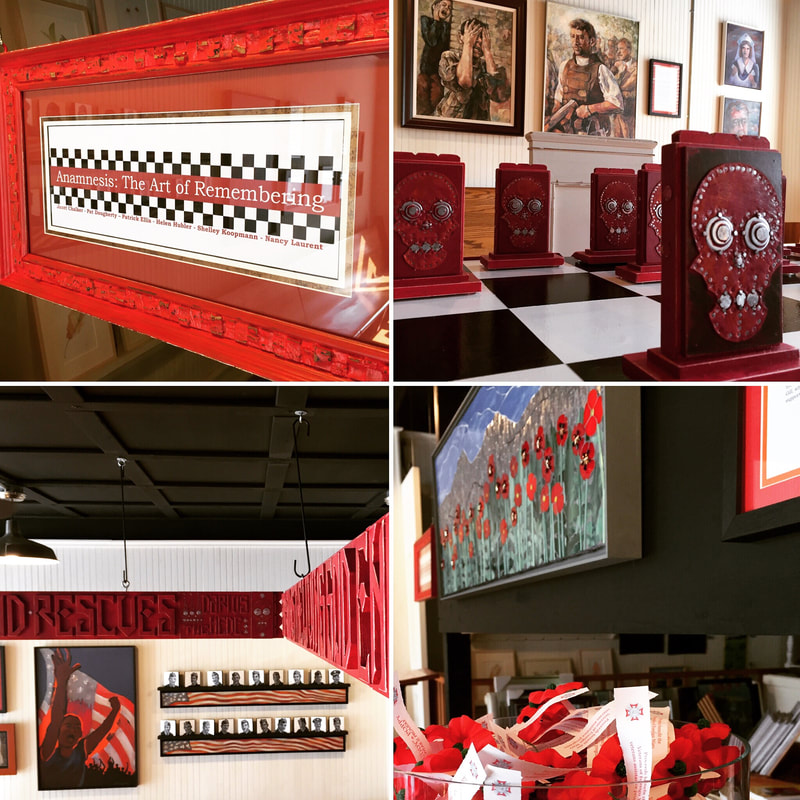






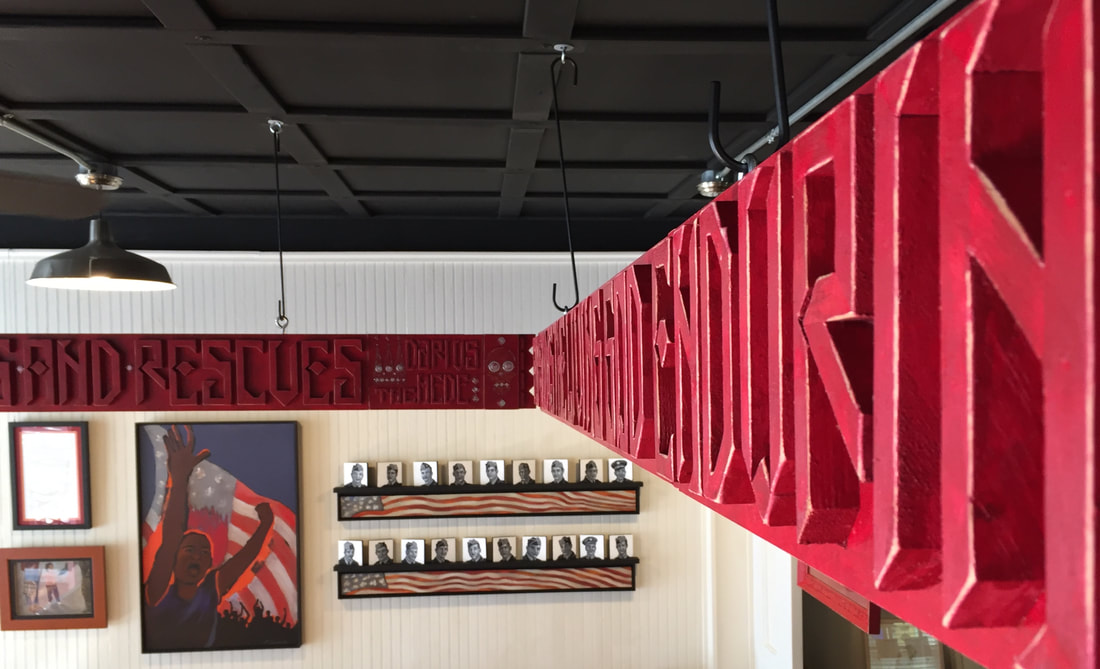
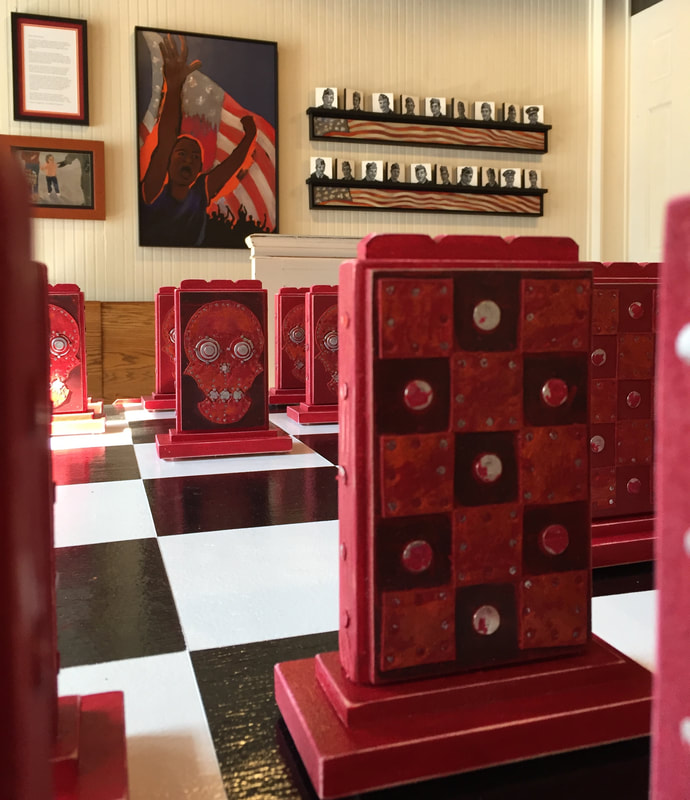

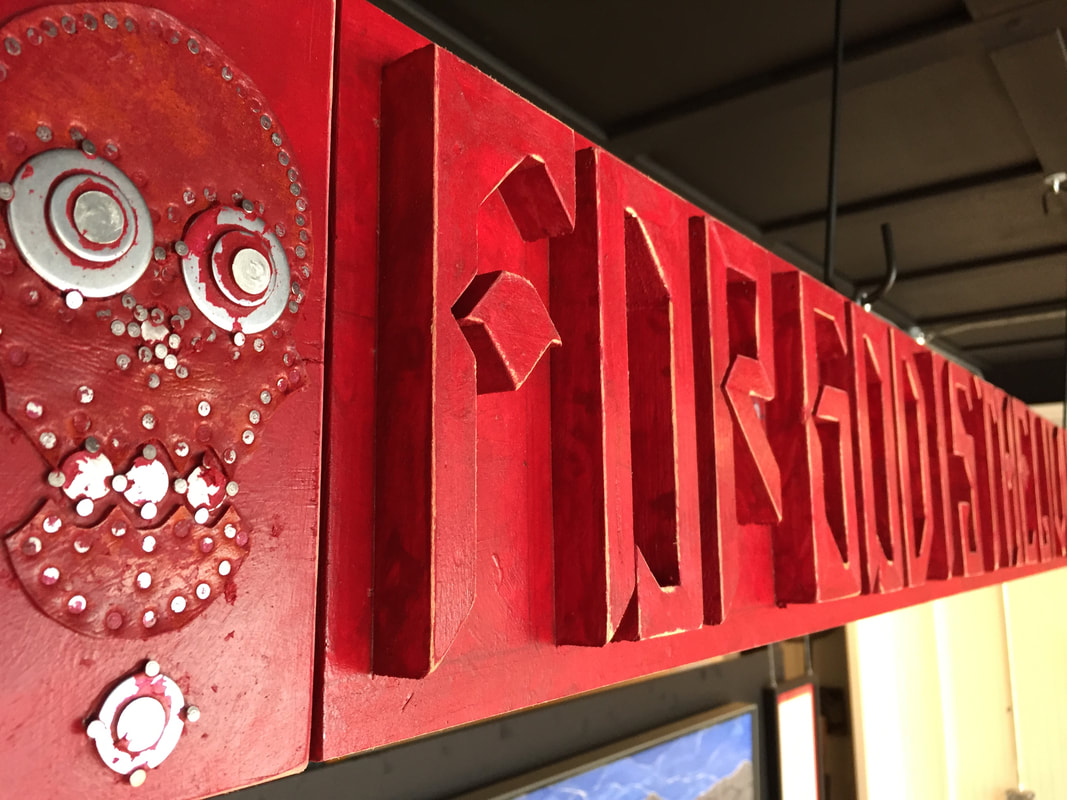
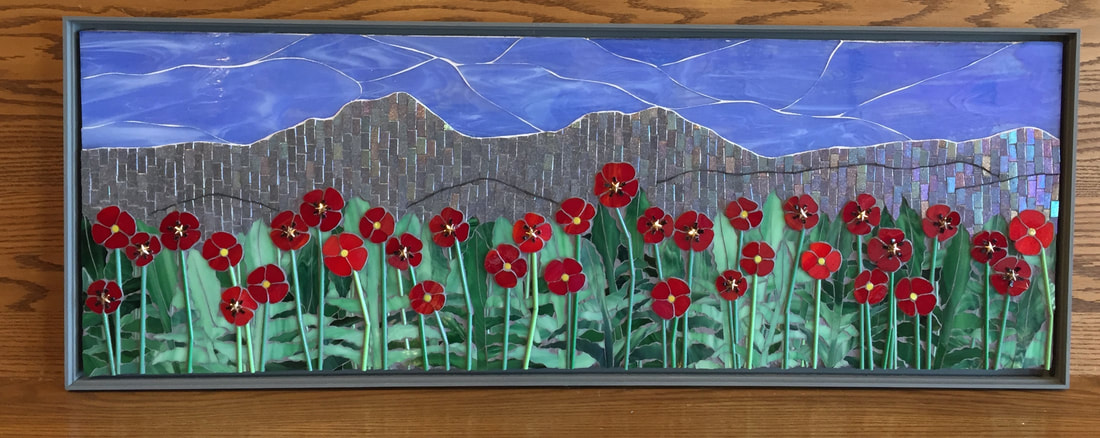
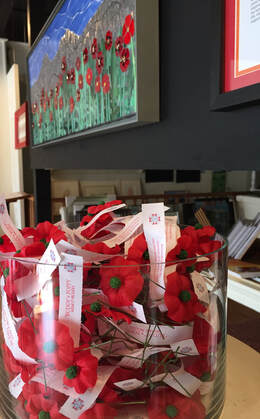

 RSS Feed
RSS Feed